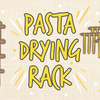Best Flour For Making Pasta

The answer to what is the best flour for making pasta will depend on the specific pasta variety you intend to prepare. Whereby, soft pasta varieties such as ravioli and tagliatelle require soft wheat flour that’s rated as 00 flour. While dealing with pasta varieties with thick and rugged shapes and texture that’s needed to soak up heavy soups and sauces, semolina flour is the right choice. This guide seeks to shed more light on the best type of flour for each pasta variety, as well as other considerations that you should be aware of before picking a specific wheat flour variety for your next batch of fresh pasta.

How Does The Flour Affect The Pasta?
1. Texture
The texture of the pasta is often dictated by the type of wheat flour used, its grain size, and the variety of wheat. The texture of wheat is best understood by its coarseness or softness as a result of the mealing process or type of wheat whereby:
- Hard Wheat Varieties: these varieties have a high protein content 10 to 14 %. This results in higher gluten content in the pasta giving it more firmness and springiness. Some of the popular hard wheat varieties include hard white, hard red spring, and hard red winter.
- Soft Wheat Varieties: soft wheat varieties include soft red winter and soft white. These wheat varieties don't have much in terms of protein content, usually 4 to 6 % protein content per seed. Soft wheat varieties aren't suitable for pasta making as they don't have enough gluten content.
- Durum Wheat: Durum wheat is the hardest wheat variety and is exclusively used for pasta production. Durum wheat gets milled into a granular yellow-colored flour known as semolina. This variety has high amounts of protein and gluten content, which is perfect for pasta firmness.
Further Reading Material: seriouseats.com
2. Colour
The color of the wheat flour used to prepare the pasta will heavily influence its final color. Semolina has a yellowish hue which produces a rich golden color in pasta. All-purpose wheat flour, on the other hand, Protein-rich wheat varieties tend to have more gluten content, which gives the pasta increased firmness and springiness. Gluten increases the stickiness on the surface of the pasta strands allowing them to adhere perfectly with sauces.
Further Reading Material: pubmed.gov

What's the role of flour in making pasta?
1. Gluten Network Creation
The gluten content in pasta flour gets superheated during the cooking process transforming the gluten into a network of protein chains that bind the pasta strand to hold shape and also giving it a stretchy texture and bite.
2. Controlling Elasticity
The elasticity of cooked pasta ribbons is as a result of the gluten chains that are found in the pasta dough. This gives pasta its characteristic elastic firmness and springiness.
3. Adding Nutrients
Wheat flour is rich in a number of nutrients, most notably protein (13 g per 100 g serving size), iron (3.6 mg per 100 g serving size), dietary fiber (11 g per 100 g serving size), and calcium (34 mg per 100 g serving size). Further reading material: nutritionalvalue.org.

Considerations When Choosing The Flour
1. Flavor
Wheat flour develops different flavor profiles depending on the level of processing whereby whole grain wheat flour retains most of the natural nutty notes in wheat. In contrast, refined wheat flour does not contain the endosperm part of the seed; thus, it lacks the distinctive nutty notes.
2. Nutrient Content
While looking for pasta flour, it's recommendable going for nutrient-rich varieties such as durum wheat flour, which is rich in proteins and essential minerals. It's important to note that gluten-free flour varieties lack the protein content usually found in standard wheat flour.
3. Specific Use Case
While looking for wheat flour, keep in mind the specific use case depending on the project whereby large pasta varieties require different wheat flour texture compared to tiny-sized varieties. For example, pene variety requires durum wheat flour while fusilli requires semolina flour.

Common Types Of Flour For Pasta
1. SemolinaBest Pasta Variety To Make: Gomiti, paccheri, and penne
Further reading material: link
Description
Semolina flour is quite rough with high gluten content; this combination allows pasta prepared using semolina to hold large shapes and designs even after cooking.
2. Durum Flour
Best Pasta Variety To Make: Spaghetti, bucatini, bigoli, and lasagna
Description
Durum flour forms dough that's easy to shape into sheets and extruding it into strands. Durum wheat flour also has high protein content, which helps maintain pasta firmness.
3. 00 Flour
Best Pasta Variety To Make: anelli, bocolli, calamarata, and farfale
Description
00 flour provides silky and soft pasta varieties due to its delicate texture. 00 flour has a similar protein content as whole purpose unbleached flour but with a finer texture.
4. All-purpose Flour
Best Pasta Variety To Make: linguine, stringozzi, magade and fettuccine
Description
All-purpose flour is a mixture of soft and hard wheat that's then milled into a fine texture with a noticeable brownish hue due to the use of whole grains.

Recommended Pasta Variety To Make For Each Requirement
Best Flour For Dietary Requirements: Almond Flour
Almond flour is an excellent alternative to wheat flour when preparing pasta thanks to its gluten-free status and a host of essential nutrients. Further reading material: healthline.com.
For Traditional Pasta: Semolina
Semolina flour makes the best traditional pasta due to its high fiber content and gluten, making it adhere to sauces twice as better as other varieties.
For Vegan Pasta: Durum
Vegan pasta skips out on the egg content, and therefore the wheat flour should have high gluten amounts to hold the pasta in shape.
For Gluten-free Pasta: Brown Rice Flour
Brown rice flour is considered to be gluten-free, making it a perfect replacement for wheat flour when it comes to producing gluten free pasta.
For Ketogenic Pasta: Zucchini
Ketogenic pasta is just low carb noodles prepared using gluten-free ingredients such as zucchini, eggplants, or even spaghetti squash combined with keto dough.

00 Flour
What Is 00 Flour
00 flour is a rating standard that refers to the most refined milled whole wheat unbleached flour. The 00 designation indicates that the wheat flour has achieved the golden standards as per the Italian culinary standards.
Why Is 00 Flour Better For Pasta?
00 flour is best for silky pasta varieties such as angel’s hair.
Using Regular Flour For Pasta
Can You Use It?
While you can use regular flour for pasta, it doesn't produce the same results as durum or semolina flour.
Should You Use It?
Yes, you can use regular flour for pasta preparation, but it's not the most recommended.
Flour That Should Not Be Used To Prepare Pasta
1. Pastry FlourBest Pasta Variety To Make: None
Description
Pastry flour has low protein and gluten content, making it flaky, which isn't suitable for pasta.

Common Questions
What Flour Is Pasta Made Of?
Pasta is mainly made using durum wheat flour or semolina.
What Type Of Flour Is Preferred In Dry Pasta?
Durum wheat flour is the most preferred flour variety in dry pasta.
Why Is My Homemade Pasta Chewy?
Pasta becomes chewy if the wheat flour used has a high gluten content.
Is Bread Flour Good For Pasta?
No, bread flour isn't recommended for pasta as it doesn't have a lot of protein and gluten content.
Can You Make Pasta With Strong White Flour?
No, avoid using bleached wheat flour as it lacks the gluten and fiber content required in pasta.
Is It Worth Making Your Own Pasta?
Yes, homemade fresh pasta is not only fun to make but also a quick way to restock on this hearty meal.
Is Pasta Made With White Flour?
No, pasta is made with whole wheat flour instead of bleached white flour.
Is Plain And All-purpose Flour The Same?
Yes, plain flour is also referred to as all-purpose wheat flour.
Can You Use Plain Instead Of Self-raising Flour?
You should never use self-raising flour to prepare pasta as the raising agent will interfere with the formation of gluten networks.
By Susan Grey
Written July 20th 2020






